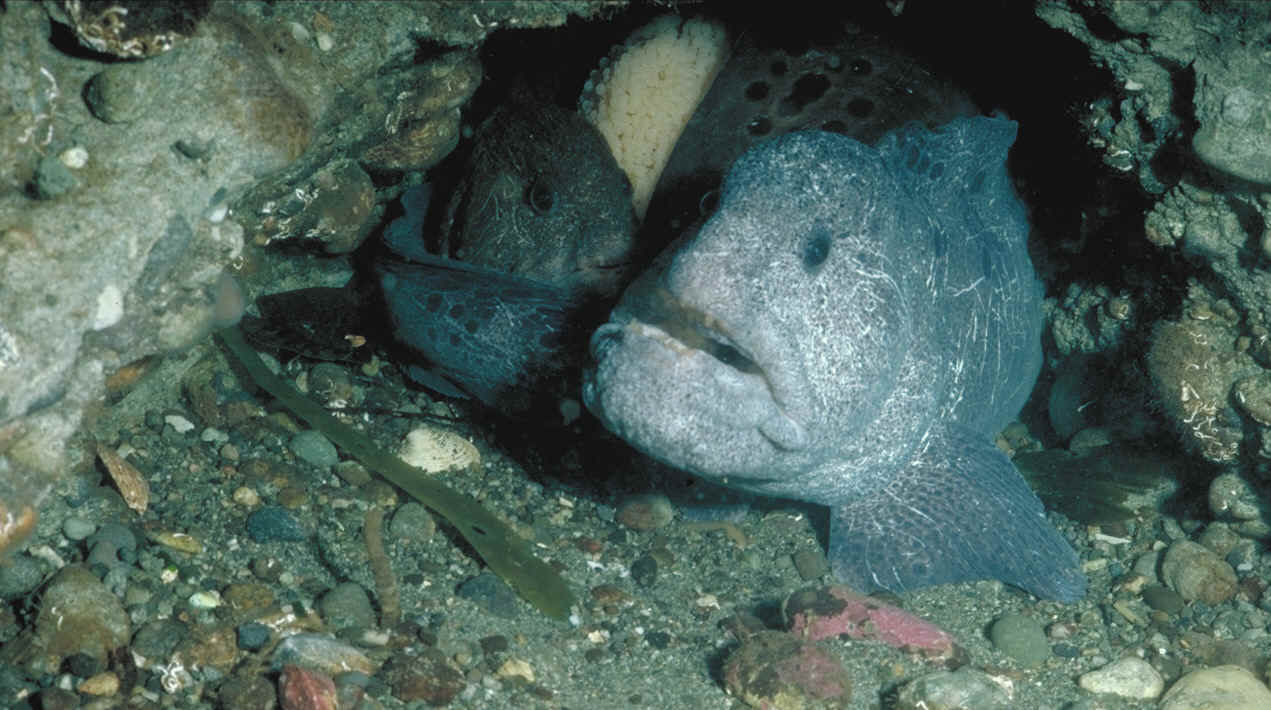
In the anal fin, it has no rays and 233 radials. They possess powerful jaws with which they crush their prey: canine teeth in the front and molars in the posterior portion of the mouth. Once older they turn grey, brown greyish or dark olive. Younger wolf eels are orange with big dark spots in the posterior part of the body. The animal can grow up to 2.4 m (7 ft 10 in) in length and 18.4 kg (41 lb) in weight. ocellatus differs from true eels, as they have paired gill slits and pectoral fins. Wolf eel at the Dallas Children's Aquarium Description Ī. The specific name ocellatus means “ocellated”, a reference to the eye like spots, or ocelli, on the dorsal fin and body. The Wolf eel’s genus name Anarrhichthys combines the wolffish genus Anarhichas, as this taxon has a similar head shape to the wolffishes, and ichthys, which means “fish”. This is one of two genera in the family Anarhichadidae, the other being Anarhichas. It is the only species in the monotypic genus Anarrichthys, which was also described by Ayres in 1855. The wolf eel was first formally described in 1855 by the American physician and ichthyologist William Orville Ayres with the type locality given as San Francisco Bay in California. It is the only species in the monotypic genus Anarrhichthys. Despite its common name and resemblance, it is not a true eel. Join us in congratulating them, and all the other couples, who have made the Aquarium part of their love story.The wolf eel ( Anarrhichthys ocellatus) is a species of marine ray-finned fish belonging to the family Anarhichadidae, the wolf fishes. It is an honor to be part of these memories.”Ĭourtney and Anthony’s wedding is coming up next month. “I also love knowing what is coming next when the other person has no idea. “My favorite part is making sure we have the right exhibit for the moment, the perfect place for pictures, and every detail,” said Andrea. Our guides love coordinating these unforgettable, heartfelt moments. The Aquarium personalizes these tours for each event-the experience can range from simple to extravagant with champagne and string musicians. Other couples have celebrated birthdays, anniversaries and other special occasions with Romance Tours. It was perfect and the sweetest gesture I could have ever dreamed of,” she said.Īnd she said yes, keeping the Aquarium’s Romance Tour proposal success rate at 100 percent! “Never in a million years did I think I would get to experience a proposal you only see in movies. She was just having a blast learning about her favorite ocean animals, checking out the areas behind the scenes and hearing insider stories from her tour guide, Andrea Satterfield.īut she was blown away when they arrived at the Kelp Forest exhibit and there was a diver holding up a sign with the big question. “Monterey is my favorite city,” Anthony said.“My father took us to the Aquarium when we were younger and it was only fitting to add another important memory in a place I hold so close to my heart.”Ĭourtney had no idea it was coming. When Anthony Martinez from Brea, California decided to take the plunge and propose to his girlfriend, Courtney Sotelo, he knew he wanted to do it at the Monterey Bay Aquarium. monterey bay aquarium wolf eel unusual fishes kelp forest exhibit kelp forest If removed from the water and fight to get away. But they are capable of inflicting painful bites, either by accident or on purpose Adult wolfĮels are curious and friendly creatures and rarely aggressive toward humans. Wiggle out of their hiding places in the Kelp Forest exhibit during feeding shows. Jaws and formidable canines and molars, wolf eels crunch on invertebrates suchĪs sea urchins, clams and mussels, as well as crustaceans and some fishes. Twill take turns protecting those and the hatchlings.

The female can lay approximately 10,000 eggs, and the pair Wolf eels also mate for life, and a mated pair will live together Life – about 25 years – if not booted out by an octopus. Once they find the perfect home they will stay there for True eels, but are very long, slender fish. In the wild, wolf eels live in the rocky reefs of the subtidal zoneĭown to 740 feet where they slither into and settle in rocky crevices. Once you see its smushy mug, you won’tįind them in the Kelp Forest and Lingcod/Wolf Eel exhibits, as well under the Kelp


 0 kommentar(er)
0 kommentar(er)
